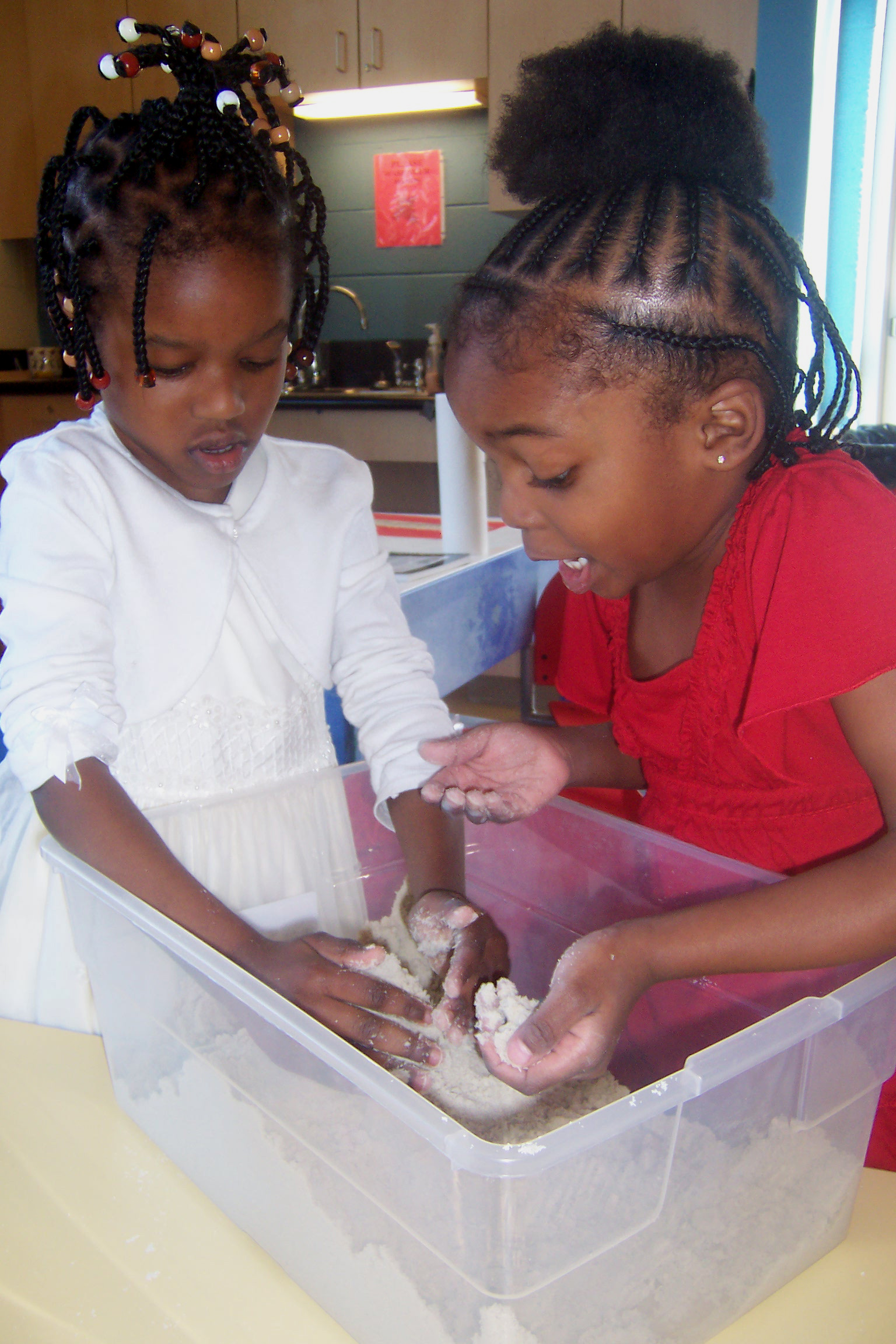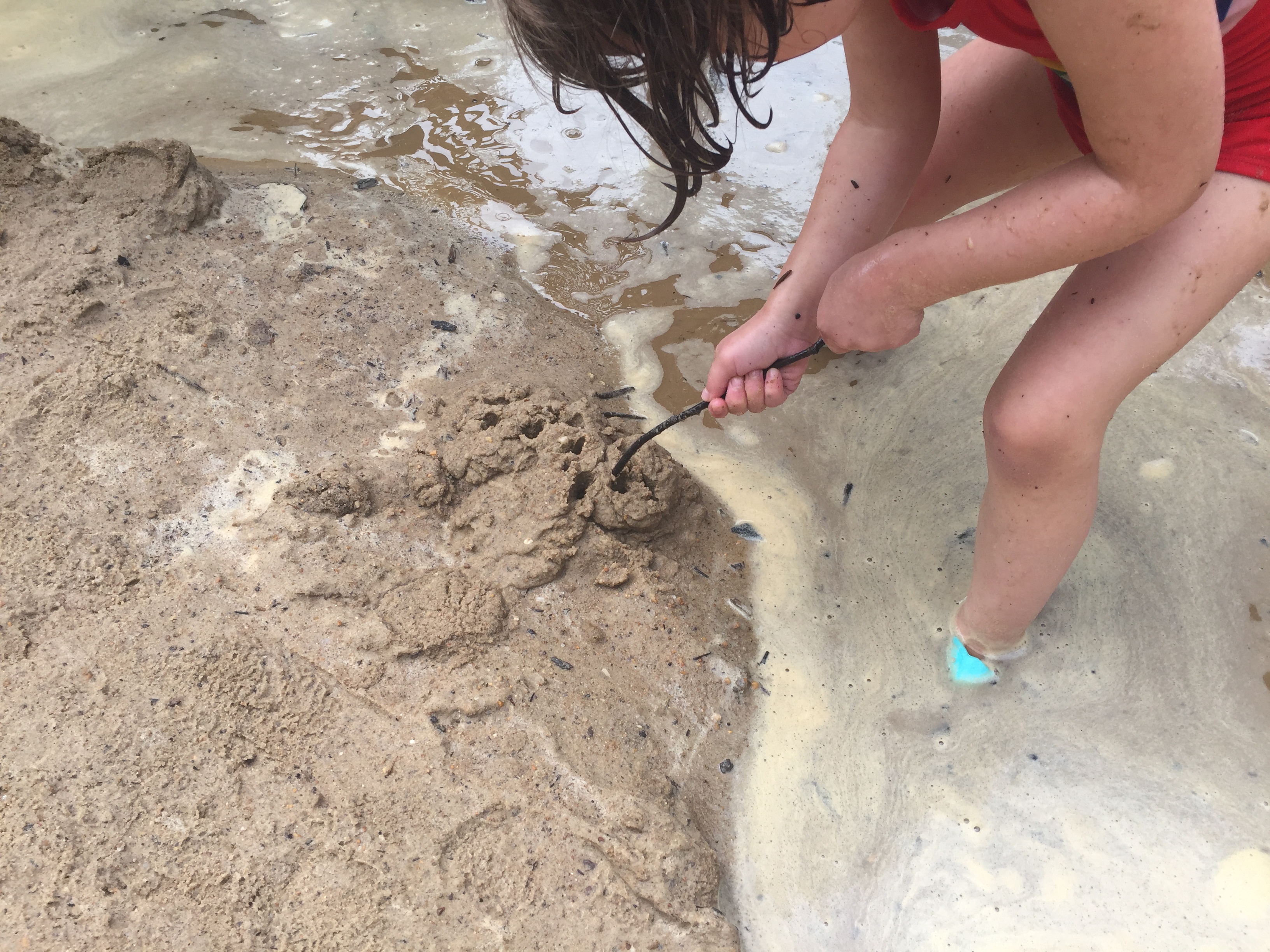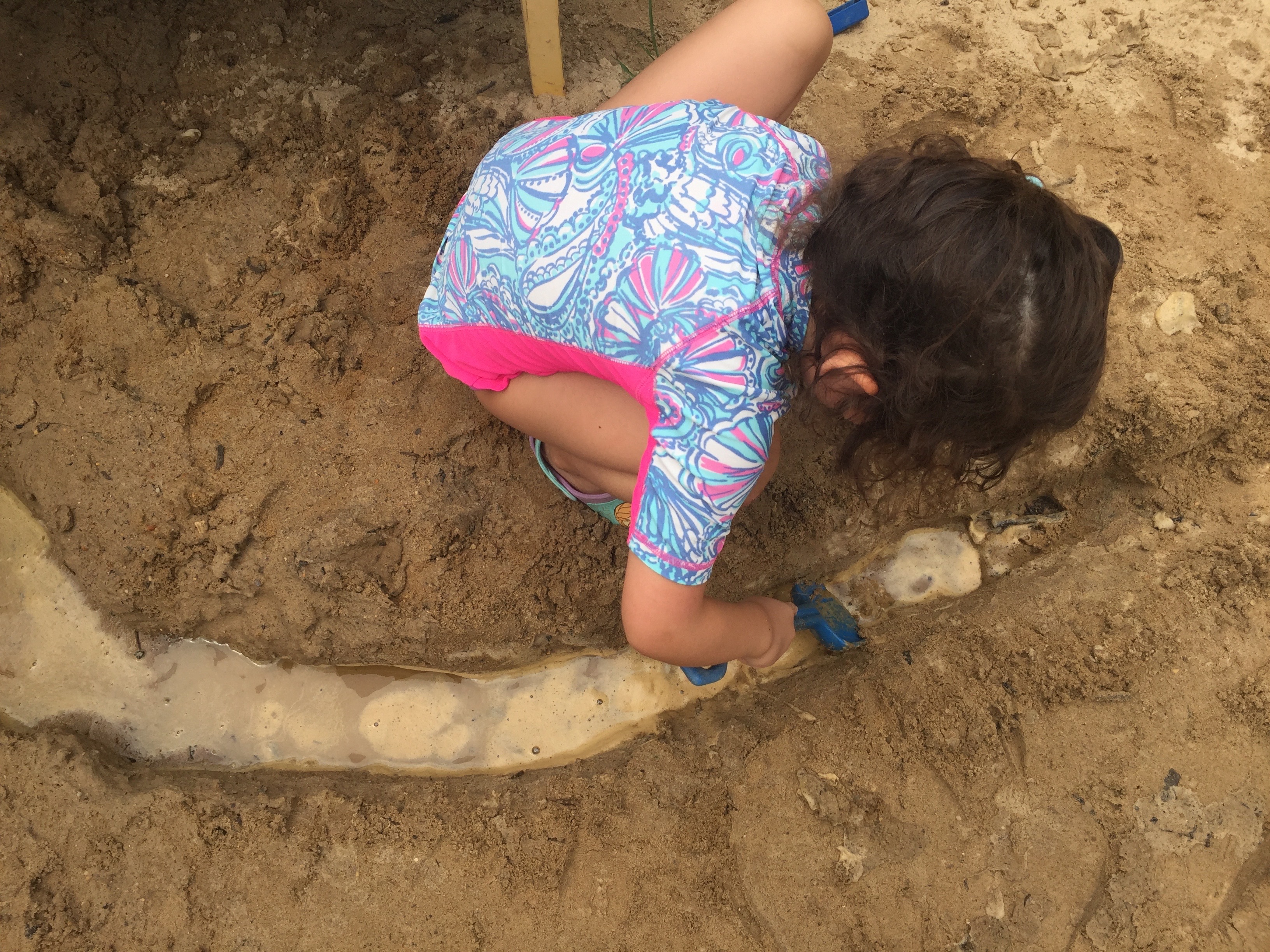Sand explorations
By Peggy Ashbrook
Posted on 2019-08-03
Sand play engages children in many of the Next Generation Science Standards (NGSS) disciplinary core ideas, practices, and crosscutting concepts. Explorations with sand also involve natural phenomena of flow and adhesion, and math concepts of scale and volume, as children scoop, pour, and build. Children observe how sand grains flow when dry and stick together when wet. The small grains combine to create a large body of matter (2-PS1-1, 2-PS1-3, and Scale, Proportion, and Quantity). Children feel the small individual grains and root down into large amounts of sand in sensory experiences.
They use wet sand to make models of landscapes (2-ESS2-2) and structures such as tunnels, towers, and channels (K-2-ETS1-2 and Developing and Using Models).
Children draw with sand and use it as a sketchpad, drawing and writing with sticks.
In small amounts or beach expanses, sand is a medium for expanding children’s experience with and knowledge of the world.
Disclaimer: The views expressed in this blog post are those of the author(s) and do not necessarily reflect the official position of the National Science Teaching Association (NSTA).















